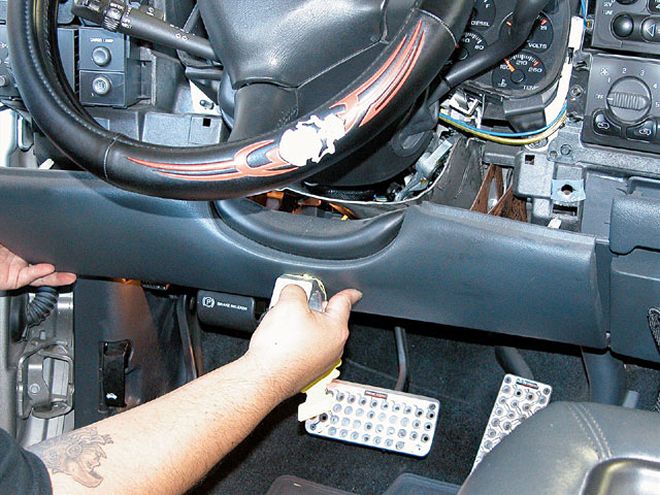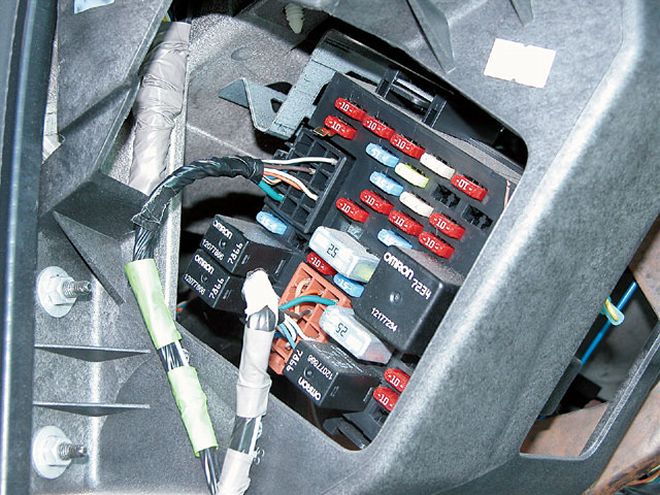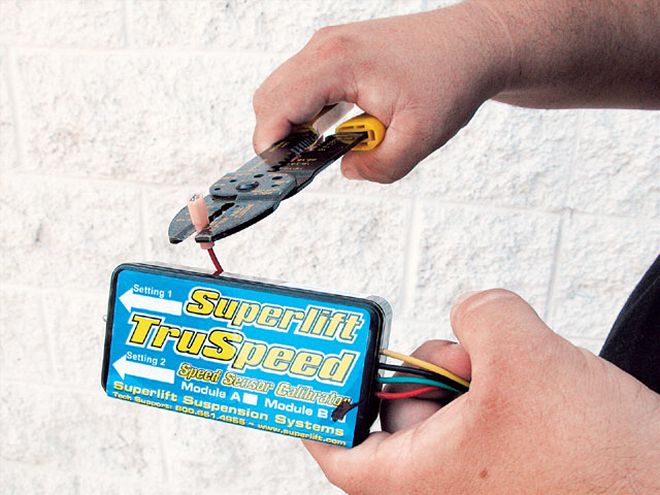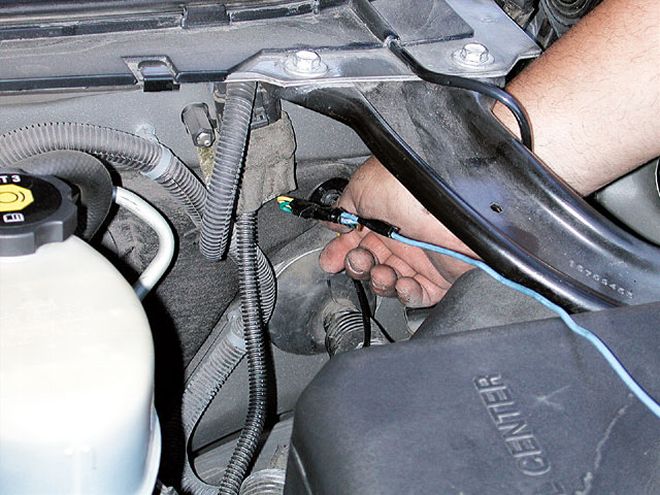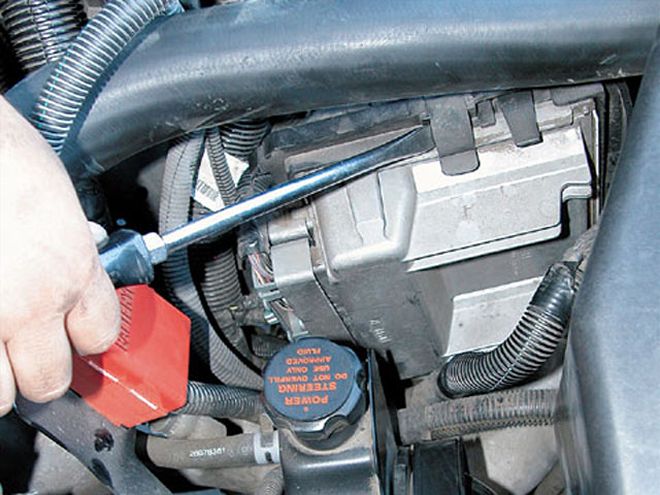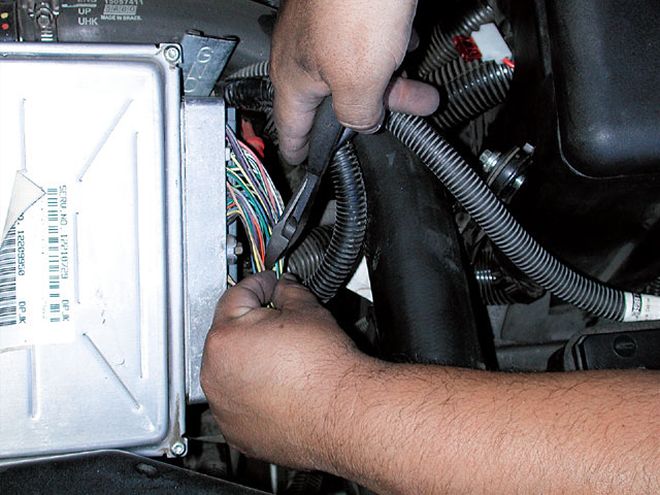Truspeed Speedometer Recalibrator - Chevy Duramax - Dead On
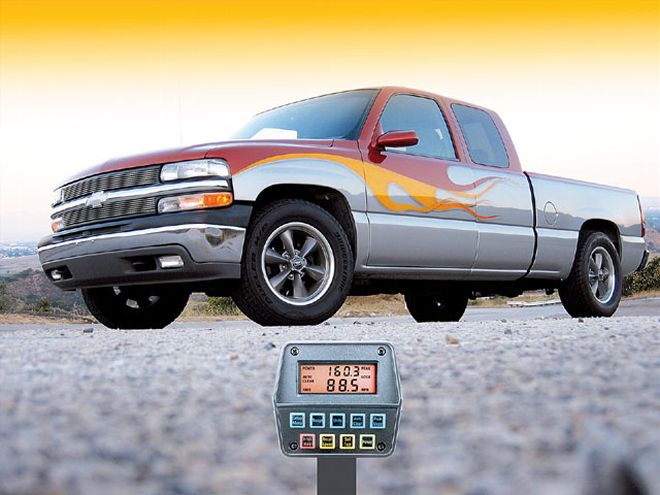
| chevy Duramax Truspeed Installation chevy Duramax
Slamming your truck to get it in the weeds on low-pro rubber or jacking it up for big, knobby meats will throw your speedometer out of whack. Most custom-truck builders know this, but few do anything about it. In older trucks with mechanically driven speedos, the correction involves changing the gear on the cable. This either requires a trip to a speedo shop that has mph-calibrated rollers or some at-home trial-and-error, with gears having various teeth counts. As a result, most truck owners just live with the fact that their speedos are 10 percent or more off at highway speeds.
Trucks began using electronic speed-sensor systems in the early '90s. While electronics usually mean fewer hands-on opportunities for do-it-yourselfers in general, the speed sensor isn't one of these areas. The aftermarket has developed straightforward methods for the home mechanic to recalibrate many trucks with electronic speed sensors.
An Icelandic invention called TruSpeed offers a straightforward way to correct the speed signal in popular late-model, computer-controlled trucks. TruSpeed intercepts the speed signal between its source, such as the ABS sensor circuit and the PCM, modifying the pulse waves so that the truck's computer receives accurate information. Each quarter-turn of the TruSpeed's dial changes the speed signal by 1 percent for highly accurate calibration. The unit also stores settings for two different tire sizes.
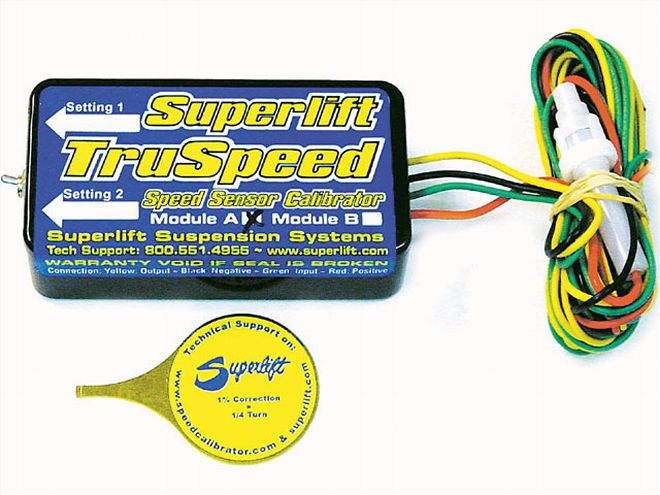
| The TruSpeed kit comes complete with mounting and wiring hardware, as well as a calibration key. The toggle switch on the left allows storing and selecting settings for two different tire sizes.
In addition to controlling the speedometer reading, the vehicle's speed sensor can impact other systems, such as antilock brakes, auto-trans shift points, fuel delivery, timing, and other emissions-related functions. Fixing the speed signal to register actual speed and distance traveled restores these functions to their stock parameters. Maintenance, resale, and warranty issues are also affected: Taller-than-stock tires cause the odometer to register fewer miles than actually traveled, and smaller, low-pro rubber will make the speedo spin faster than it should-prematurely voiding mileage-based warranties.
TruSpeed installation only involves four wires and can be done by anyone with basic skills who can also solder. For calibration, the TruSpeed instructions provide approximate settings based on the difference between new and stock tire diameters and axle gears. Calibration should be verified by using roadside milemarkers, a GPS, a radar system, or by pacing with another vehicle.
These photos show a TruSpeed installation on a Chevy Duramax. TruSpeed applications are available for many '92-and-later GMC/Chevy, Dodge, Ford, Jeep, and Toyota trucks. The main installation differences among vehicles are the locations of their fuse boxes and speed-sensor wires.
This leisurely installation took about 2 hours. A nearby speed-survey radar trailer helped us dial in and verify speed calibration. A few passes were necessary, since our initial "dial in" was off-this truck's stock tires were long gone and we guessed at their diameter. Using a handheld GPS is perhaps a more popular way to fine-tune the TruSpeed.
 | chevy Duramax Truspeed Installation chevy Duramax
Slamming your truck to get it in the weeds on low-pro rubber or jacking it up for big, knobby meats will throw your speedometer out of whack. Most custom-truck builders know this, but few do anything about it. In older trucks with mechanically driven speedos, the correction involves changing the gear on the cable. This either requires a trip to a speedo shop that has mph-calibrated rollers or some at-home trial-and-error, with gears having various teeth counts. As a result, most truck owners just live with the fact that their speedos are 10 percent or more off at highway speeds.
Trucks began using electronic speed-sensor systems in the early '90s. While electronics usually mean fewer hands-on opportunities for do-it-yourselfers in general, the speed sensor isn't one of these areas. The aftermarket has developed straightforward methods for the home mechanic to recalibrate many trucks with electronic speed sensors.
An Icelandic invention called TruSpeed offers a straightforward way to correct the speed signal in popular late-model, computer-controlled trucks. TruSpeed intercepts the speed signal between its source, such as the ABS sensor circuit and the PCM, modifying the pulse waves so that the truck's computer receives accurate information. Each quarter-turn of the TruSpeed's dial changes the speed signal by 1 percent for highly accurate calibration. The unit also stores settings for two different tire sizes.
| chevy Duramax Truspeed Installation chevy Duramax
Slamming your truck to get it in the weeds on low-pro rubber or jacking it up for big, knobby meats will throw your speedometer out of whack. Most custom-truck builders know this, but few do anything about it. In older trucks with mechanically driven speedos, the correction involves changing the gear on the cable. This either requires a trip to a speedo shop that has mph-calibrated rollers or some at-home trial-and-error, with gears having various teeth counts. As a result, most truck owners just live with the fact that their speedos are 10 percent or more off at highway speeds.
Trucks began using electronic speed-sensor systems in the early '90s. While electronics usually mean fewer hands-on opportunities for do-it-yourselfers in general, the speed sensor isn't one of these areas. The aftermarket has developed straightforward methods for the home mechanic to recalibrate many trucks with electronic speed sensors.
An Icelandic invention called TruSpeed offers a straightforward way to correct the speed signal in popular late-model, computer-controlled trucks. TruSpeed intercepts the speed signal between its source, such as the ABS sensor circuit and the PCM, modifying the pulse waves so that the truck's computer receives accurate information. Each quarter-turn of the TruSpeed's dial changes the speed signal by 1 percent for highly accurate calibration. The unit also stores settings for two different tire sizes.
 | The TruSpeed kit comes complete with mounting and wiring hardware, as well as a calibration key. The toggle switch on the left allows storing and selecting settings for two different tire sizes.
In addition to controlling the speedometer reading, the vehicle's speed sensor can impact other systems, such as antilock brakes, auto-trans shift points, fuel delivery, timing, and other emissions-related functions. Fixing the speed signal to register actual speed and distance traveled restores these functions to their stock parameters. Maintenance, resale, and warranty issues are also affected: Taller-than-stock tires cause the odometer to register fewer miles than actually traveled, and smaller, low-pro rubber will make the speedo spin faster than it should-prematurely voiding mileage-based warranties.
TruSpeed installation only involves four wires and can be done by anyone with basic skills who can also solder. For calibration, the TruSpeed instructions provide approximate settings based on the difference between new and stock tire diameters and axle gears. Calibration should be verified by using roadside milemarkers, a GPS, a radar system, or by pacing with another vehicle.
These photos show a TruSpeed installation on a Chevy Duramax. TruSpeed applications are available for many '92-and-later GMC/Chevy, Dodge, Ford, Jeep, and Toyota trucks. The main installation differences among vehicles are the locations of their fuse boxes and speed-sensor wires.
This leisurely installation took about 2 hours. A nearby speed-survey radar trailer helped us dial in and verify speed calibration. A few passes were necessary, since our initial "dial in" was off-this truck's stock tires were long gone and we guessed at their diameter. Using a handheld GPS is perhaps a more popular way to fine-tune the TruSpeed.
| The TruSpeed kit comes complete with mounting and wiring hardware, as well as a calibration key. The toggle switch on the left allows storing and selecting settings for two different tire sizes.
In addition to controlling the speedometer reading, the vehicle's speed sensor can impact other systems, such as antilock brakes, auto-trans shift points, fuel delivery, timing, and other emissions-related functions. Fixing the speed signal to register actual speed and distance traveled restores these functions to their stock parameters. Maintenance, resale, and warranty issues are also affected: Taller-than-stock tires cause the odometer to register fewer miles than actually traveled, and smaller, low-pro rubber will make the speedo spin faster than it should-prematurely voiding mileage-based warranties.
TruSpeed installation only involves four wires and can be done by anyone with basic skills who can also solder. For calibration, the TruSpeed instructions provide approximate settings based on the difference between new and stock tire diameters and axle gears. Calibration should be verified by using roadside milemarkers, a GPS, a radar system, or by pacing with another vehicle.
These photos show a TruSpeed installation on a Chevy Duramax. TruSpeed applications are available for many '92-and-later GMC/Chevy, Dodge, Ford, Jeep, and Toyota trucks. The main installation differences among vehicles are the locations of their fuse boxes and speed-sensor wires.
This leisurely installation took about 2 hours. A nearby speed-survey radar trailer helped us dial in and verify speed calibration. A few passes were necessary, since our initial "dial in" was off-this truck's stock tires were long gone and we guessed at their diameter. Using a handheld GPS is perhaps a more popular way to fine-tune the TruSpeed.
